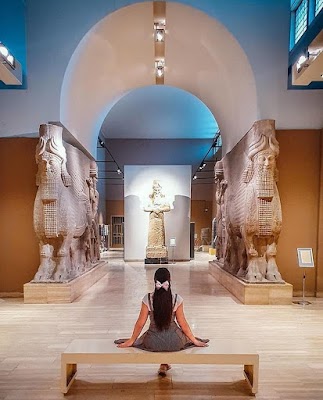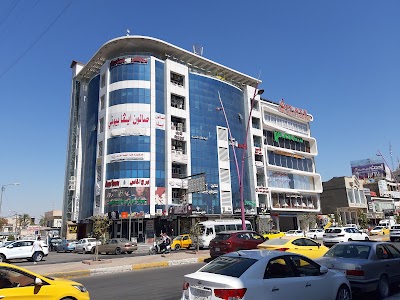Al-Ma'mun Palace (قصر المأمون)
Overview
**Al-Ma'mun Palace: A Historical Gem in Baghdad**
Al-Ma'mun Palace, known locally as Qasr al-Ma'mun, is a remarkable historical and architectural jewel located in Baghdad, Iraq. This iconic structure provides foreign tourists with a captivating glimpse into the rich cultural heritage of the region. As a testament to Islamic art and architecture, it reflects the grandeur and sophistication of the Abbasid Caliphate era.
Constructed during the reign of **Caliph Al-Ma'mun**—one of the most illustrious rulers of the Abbasid dynasty from 813 to 833 AD—the palace signifies a flourishing period in history. Al-Ma'mun is celebrated not only for his political acumen but also for his commitment to learning and cultural development. His reign is often regarded as a pivotal time during the **Islamic Golden Age**, characterized by significant intellectual advancements and a vibrant exchange of knowledge. Al-Ma'mun's support for scholars, artists, and scientists transformed Baghdad into a central hub of knowledge and innovation.
Strategically situated on the banks of the **Tigris River**, Al-Ma'mun Palace served dual purposes as both a residence for the caliph and an administrative center. The palace's architecture is a stunning blend of **Persian, Byzantine, and early Islamic influences**. Visitors can admire the intricate stucco work, expansive courtyards, and elegant arches that exemplify the architectural ingenuity of the era.
One of the palace's most notable historical contributions is its connection to the **Bayt al-Hikma**, or House of Wisdom. Founded by Al-Ma'mun, this institution was a groundbreaking academy where scholars gathered to translate and expand upon ancient knowledge from Greek, Persian, and Indian texts. The House of Wisdom played a crucial role in preserving and enriching the world's body of knowledge, which would later influence the **Renaissance in Europe**.
As you stroll through the halls of Al-Ma'mun Palace, you can almost sense the presence of the scholars and artisans who once inhabited this remarkable space. The palace's design emphasizes both functionality and beauty, featuring rooms that served multiple purposes adorned with intricate decorations. The audience halls, where Al-Ma'mun would host poets, philosophers, and diplomats, are particularly captivating. These grand spaces were crafted to impress and inspire, characterized by lofty ceilings and elaborate ornamentation that reflect the artistic flourishing of the time.
An interesting aspect of Al-Ma'mun Palace is the **advanced engineering** that went into its construction. Builders employed sophisticated techniques for climate control, ensuring the palace remained cool during the scorching summer months. The use of thick walls, shaded courtyards, and water channels (qanats) exemplifies the remarkable ingenuity of medieval Islamic architecture.
Today, Al-Ma'mun Palace stands as a poignant reminder of Baghdad's storied past. While time and various conflicts have taken their toll on the structure, ongoing restoration efforts aim to preserve this cultural treasure for future generations. These preservation initiatives not only focus on physical restoration but also enhance the site's accessibility and educational value for visitors.
For tourists, a visit to Al-Ma'mun Palace is both educational and inspirational. The grandeur of the palace, coupled with its historical significance, offers a unique insight into the rich tapestry of Baghdad's history. To fully appreciate the historical context and architectural details, it is highly advisable to take a **guided tour**. Knowledgeable guides can provide deep insights into the life and times of Al-Ma'mun, the impact of the Abbasid Caliphate, and the enduring legacy of the House of Wisdom.
In conclusion, Al-Ma'mun Palace is more than just an architectural landmark; it symbolizes cultural and intellectual achievement. It stands as a testament to a time when Baghdad was the epicenter of world knowledge and culture, reflecting the ingenuity and forward-thinking spirit of the Abbasid Caliphate. For foreign tourists, visiting this palace is a journey back in time, offering a rich, immersive experience that celebrates the historical and cultural vibrancy of Iraq.





